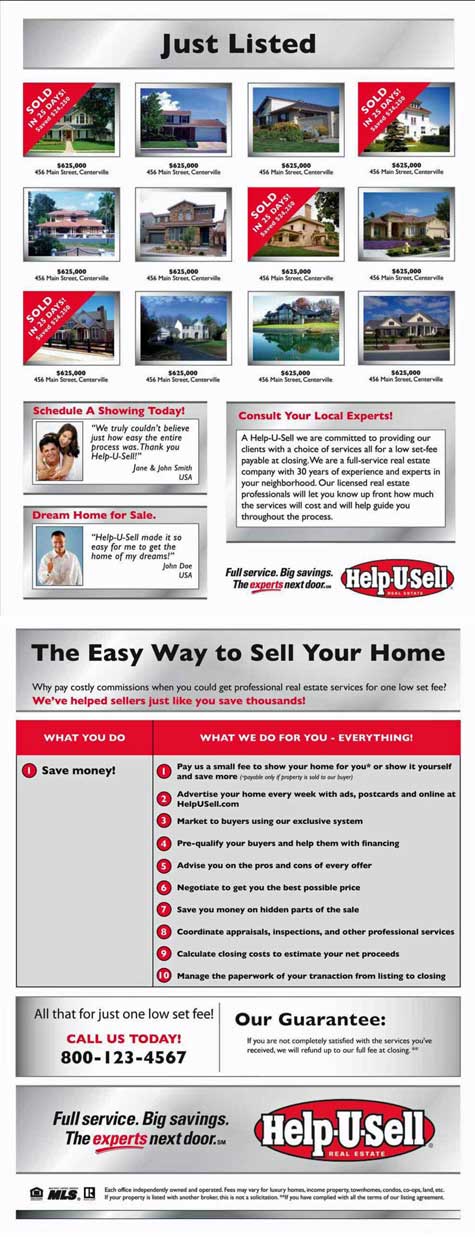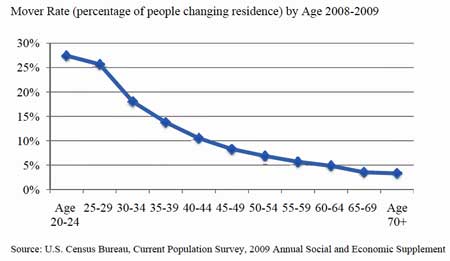(This is an elaboration of ‘How to Rule the (Real Estate) World in 10 Easy Steps‘)
Before we get on to Step 2, I want to clarify something about Step 1, which had to do with building listing market share. If you get 20 listings this month, spread out over a 50 mile radius of your office, that’s nowhere near as powerful as 20 listings within a 3 -5 mile radius. We’re not talking about taking any listing anywhere — that’s not what this is about. This is about quickly creating a market presence that feeds you and perpetuates itself. You do that in a compact target market.
I believe there are 3 areas where you might take listings:
- 1 is your target market, where you spend time, money and effort to get listings. It’s probably a 10 minute drive around your office, maybe smaller.
- 2 is the area directly contiguous to your target. It’s probably no more than 20 minutes from your office. You’re not going to actively market there (until you’re ready to expand) but you’ll naturally get some inquiries and you won’t turn them down.
- 3 is a much broader area where friends, family and former clients who refuse to work with anyone else have property. Every once in awhile you’ll probably have to take one of those, but any listing that takes more than 30 minutes to get to from your office is probably a distraction from what you’re doing and should be avoided. Think about it: showing a property like that or meeting with a seller to review price will take 30 minutes there and back – that’s an hour – plus however much time you’re spending at the property. You easily could shoot an entire morning or afternoon taking care of one simple task, a morning or afternoon that could be spent getting another listing in your target market. And though we all like getting paid when that distant listing sells, we’re probably not going to take advantage of the marketing opportunities the sale affords because, frankly, we’re not building anything there right now.
The word is FOCUS. Clear? Great: on to Step 2 – the Better Deal
You can’t run into the market shouting ‘I do everything the other guys do and get paid just like they do, and that’s why you should list with me!’ There is no differentiator there, nothing to sell. If that’s the consumer offer, my neighbor, 2 doors down is probably a better deal. At least I’ll have peace in the neighborhood. Now you might fluff that up with some fancy or hi-tech language, but consumers have become pretty savvy and are not nearly as susceptible to hyperbole as they were 20 years ago.
Neither can you run into the market shouting, ‘I do everything the other guys do and charge a lower commission than they do, and that’s why you should list with me!” All you’re saying is that you’re the same old thing, just discounted. If your competitor is charging 6% and you’re charging 1.75%, the consumer does the math and decides you’re a cut rate alternative, like the dollar store. The question they will have in the back of their heads is: what are you NOT going to do for me? What am I giving up?
When you go into the market shouting, ‘I do everything the other guys do but have a completely different business model and charge in a completely different manner and that’s why you should list with me!’ you’ve said a mouthful! In the back of the consumer’s mind is: How does that work? What do you do? And you know, with Help-U-Sell, if any seller ever asks, ‘What do you do?’ you’re 80% assured of getting the listing. The offer is so appealing that you’re almost always successful. You’d probably have to make a mistake or not want the listing to fail.
So what is this better deal you’re offering sellers? It’s the BIG THREE:
Set Fee Pricing. It says ‘I set my fees logically. Just like any other business, my goal is to cover my expenses and make a reasonable profit, not a killing‘ (Who died? The consumer!) Really: if you convert your set fee into a percentage, you take all the differentiating power and logic out of it. You just become another discounter and the consumer question is: What am I NOT going to get? None of this means you should have only one set fee. If logic dictates that you have 2 or even 3 (logic being things like marketing time and expense), you should have them. But if your ‘set fee’ is graduating every $50,000 in price, it’s not a set fee at all. It’s a percentage commission in a very bad disquise. As we used to say Down South: that bird won’t fly; that dog don’t hunt; that cat won’t flush. (Sorry, cat lovers — couldn’t resist!)
Menu Pricing. This comes into play twice. First, when the seller chooses the services he or she wants — open houses? MLS? showing fee? Second, when the house sells and the seller pays for ONLY the services that produced the sale. This is a big differentiator (and if you haven’t noticed, anything that differentiates you from the stale traditional model is GOOD). With your competitors, one size fits all. No matter how the house sells — whether in the MLS through another broker or not, whether the seller happens to find his or her own buyer or not — the percentage based commission is not going to change. Think about that for a minute . . . is that stupid or what? If that made sense, every time you took your car in for a tune up, you’d be charged for an overhaul (just in case); every time you ordered an entre in a restaurant, you’d be charged for an appetizer and desert (cause you might just get one). The Seller Savings Comparison (it’s in the Download Library) is something you should be able to work in your sleep because it is the tool you use to present this wonderful consumer benefit.
Seller Involvement. Yes, this is a big consumer benefit. Over an over, the research indicates that sellers are quite happy to take on some of the less challenging aspects of selling their home, especially if there is a potential financial reward for doing so. If we first present Menu Pricing and then demonstrate how a seller increases his or her odds of saving the greatest amount of money by participating, they almost always say, ‘Heck yeah! Save $6,000? I’ll hold a few open houses and keep my flyer box stocked!’
There are lots of other components of the consumer offer, but these are the three that will cause sellers to pursue you. If you’re working with a seller who is so intrigued by the Big Three that he or she wants more and more detail, you might also talk about:
Targeted Marketing. It fuels our program.
Broker Control. It brings sanity back into office operation so that we can offer our incredibly good pricing deal and still make more money than our competitors.
Focused Job Descriptions for Office Staff (including Buyer Agents). Like Broker Control, this is something that makes it all work.
It’s going to be a rare seller who’s going to want to know all about the second set of three . . . and if you run across one, call me because they’re probably a good candidate for buying a franchise! And if you’re getting into that level of detail in a listing consultation you’re probably spending too much time. Help-U-Sell makes perfect sense and so it doesn’t take long to explain. This is significant. I remember working at brand X and training agents to make elaborate and long listing presentations. The presentations were long because it takes a long time to justify a commission that makes no sense, or to wear a seller down, whichever comes first! If you’re presenting Help-U-Sell effectively, you should be done with that part of the presentation in 10 – 15 minutes. Pricing should take another 15 – 25 depending on how realistic your seller is, and coaching the seller on how to prepare and participate will take longer: 20 – 30 minutes. You should be in an out in about an hour. I’m not kidding.
Tomorrow, unless I get hit by a bus, we’re ‘How to Rule the (Real Estate) World in 10 Easy Steps: building consumer awareness and interest.


